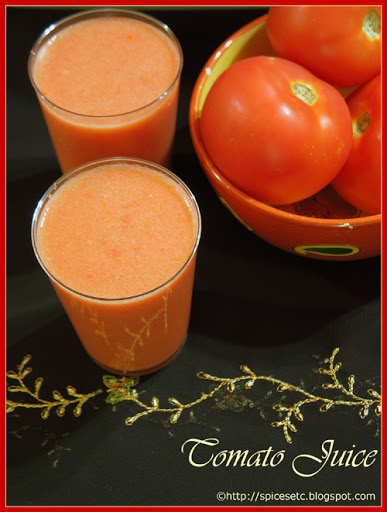THE QUEEN OF SPICES IN MY KITCHEN SHELF - SAMBAR PODI
Many of you may wonder when I include
Sambar podi as an ingredient in not only Sambar, but also in
rasams, kozhambus and koottus, various
curries. I even use them in North Indian
currys such as Paneer Butter Masala or Gobi Aloos, Koftas and so on. I also use it as a garnish on dahi vadas, pachadis, in aloo parathas and literally every other dish that calls for chilli powder. The term ‘
SAMBARA’ in Kannada means “pungent or aromatic vegetable substance used as flavoring” as per the dictionary. The
Sambar podi (Spice powder) in my kitchen shelf is the queen of all spices and it combines very well with the other specified ingredients to lend a unique flavor to various dishes.
When I set up an independent house hold after my first child was born, mother sent me jars and jars of this
sambar podi – the most precious gift a girl in that position would wish for - with who ever visited me from her place. My mother–in–law supplied me with her special flavorsome
rasam podi. All my dishes turned out quite delicious with the two
podis ruling my kitchen.
With the advent of the 21st century , when all the younger generations are scattered all over the globe, it is impossible for them to find help to pound the spices, or take the spices to the “misheen” (shops with grinding machines).
This post is for the die hard connoisseur who is willing to get the traditional flavours of the
Sambar podi, from wherever she/he might be stationed. Chillies also come in a variety of shapes, sizes and shades of red, and all types are not available everywhere. The chilli variety I use is
Guntur Red Chillies, as they are quite spicy.
Byadagi chillies are less pungent, but provide a bright red colour. Here is a
good site that describes different
chillie varieties in India. You can however use any variety that appeals to you, in terms of pungency and colour.
For convenience and since some of you asked for cup measures rather than grams, I have provided the recipes using red chillie and turmeric powders instead of the whole spices. In this recipe I have used ready made MTR Chillie powder. If you want the recipe using whole spices and large quantities, do check this
post.
INGREDIENTS:

1. Red chilly powder - 2 cups (Whole red chillies are not used here, since it can not be contained in cup measures. Same applies to turmeric sticks also.)
2. Turmeric powder – 2 heaped tea spoons
3. Dhania (Coriander seeds) – 2 cups
4. Tur dal (Red gram / split pigeon peas ) – ¼ cup
5. Chana dal (Bengal gram dal) – ¼ cup
6. Urad Dal ( Black gram dal) – 1 tbsp
7. Black pepper corns – 2 tbsps
8. Cumin seeds – 2 tbsps
9. Fenugreek seeds – 2 tsp
10. Mustard seeds – 1 tsp
 METHOD:
METHOD:
1. Grind all the ingredients except the turmeric powder and the chillie powder into a fine powder.
I usually mix all the ingredients and them and keep them in the Sun for a while so that it gets powdered easily. If this is not possible, the ingredients may be allowed to stand in a hot pan for a while. It should NOT be roasted though, as that will change the flavour completely.
2. When the powder is fine enough, add the turmeric powder and run the mixer.
3. Finally add the chillie powder and blend in the mixer.
4. Stop running the mixer at intervals so that it does not get heated, as even this little heat will roast the ingredients and change the flavour!
6. An orangish red coloured sambar podi is now ready.
7. Store the sambar podi in clean, dry, air tight jars to preserve the flavour.
The snap above shows the various lovely colours in the mixer stage by stage - lentils and dhania (corriander seeds), then addition of turmeric, and addition of red chillie powder little by little, that finally contribute to the lovely orange red of sambar powder. Now your Spice Queen is ready to rule your kitchen.

The measures above give about 5 cups of powder, and this quantity lasts us about 2 weeks for a family of 3 to 4 members, and we use this in almost every other dish. However, depending on how well you store it, this powder can retain almost all its original intensity and flavour over six months – maybe more. My daughter stocks up on
Sambar powder when she visits us once or twice a year. She stores it in tightly sealed plastic bags, and keeps the bag in air tight jars. Just a little is brought out every alternate week in small amounts, and stored in a small box for daily use.







 The measures above give about 5 cups of powder, and this quantity lasts us about 2 weeks for a family of 3 to 4 members, and we use this in almost every other dish. However, depending on how well you store it, this powder can retain almost all its original intensity and flavour over six months – maybe more. My daughter stocks up on Sambar powder when she visits us once or twice a year. She stores it in tightly sealed plastic bags, and keeps the bag in air tight jars. Just a little is brought out every alternate week in small amounts, and stored in a small box for daily use.
The measures above give about 5 cups of powder, and this quantity lasts us about 2 weeks for a family of 3 to 4 members, and we use this in almost every other dish. However, depending on how well you store it, this powder can retain almost all its original intensity and flavour over six months – maybe more. My daughter stocks up on Sambar powder when she visits us once or twice a year. She stores it in tightly sealed plastic bags, and keeps the bag in air tight jars. Just a little is brought out every alternate week in small amounts, and stored in a small box for daily use. 





